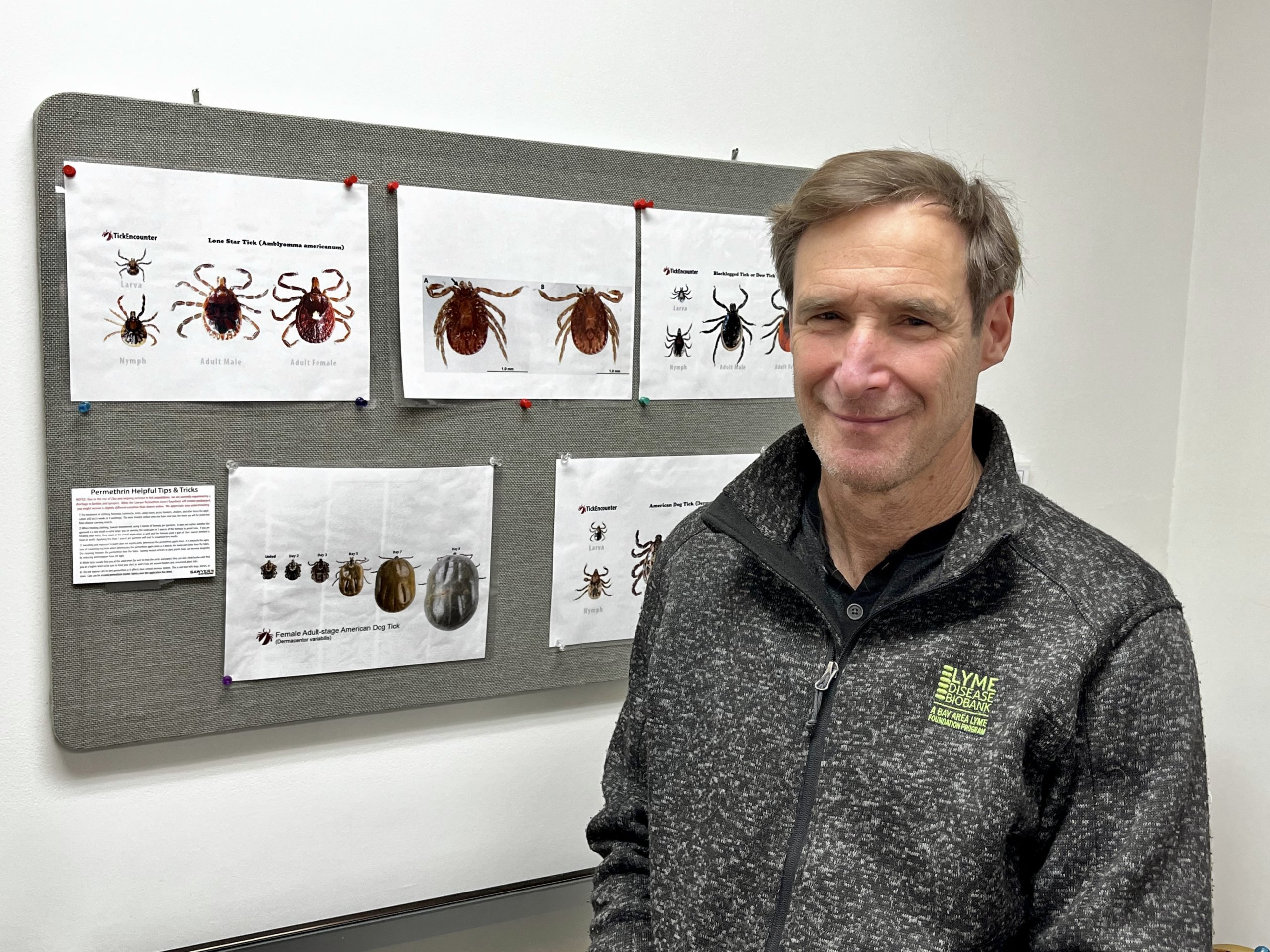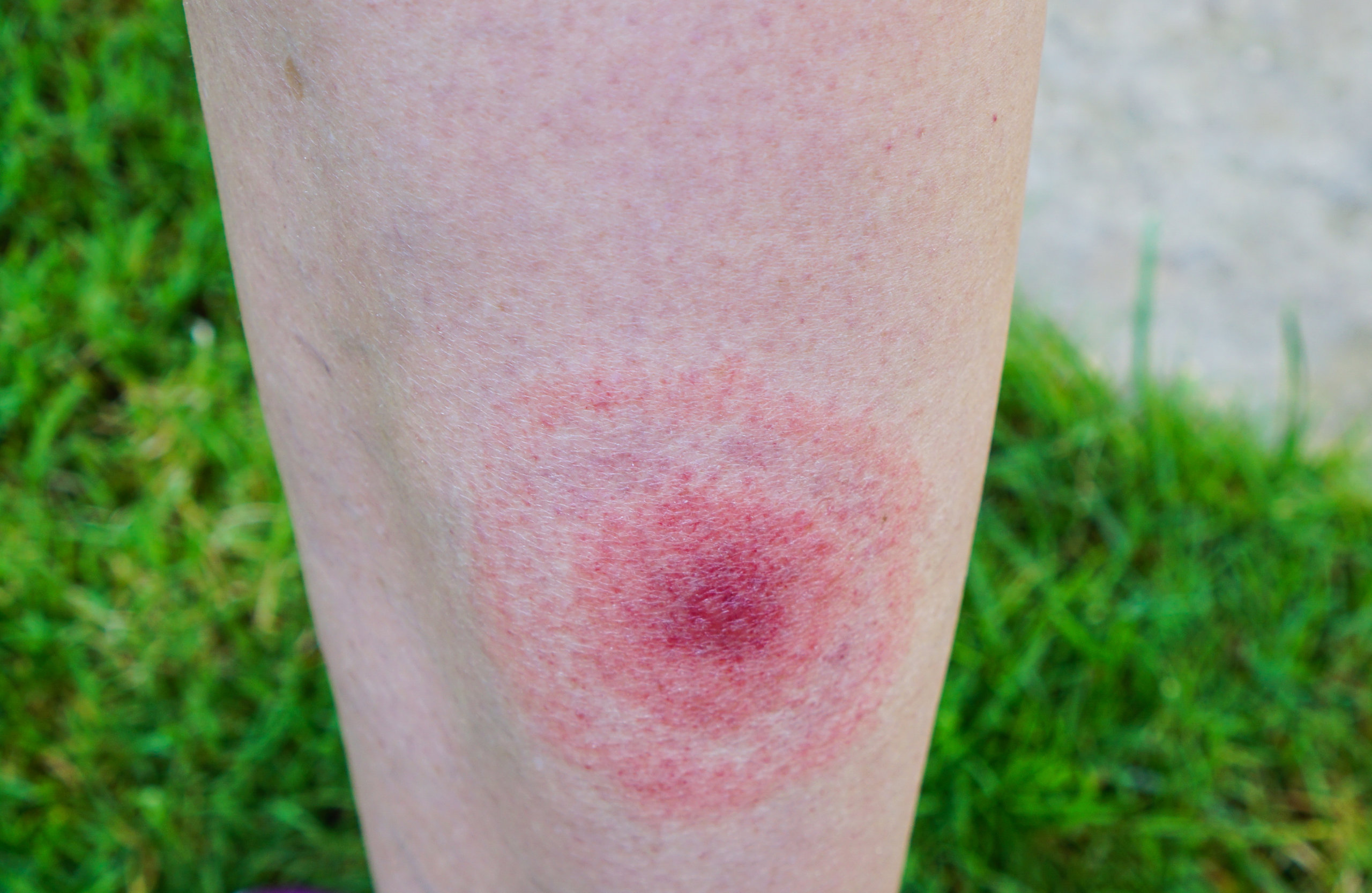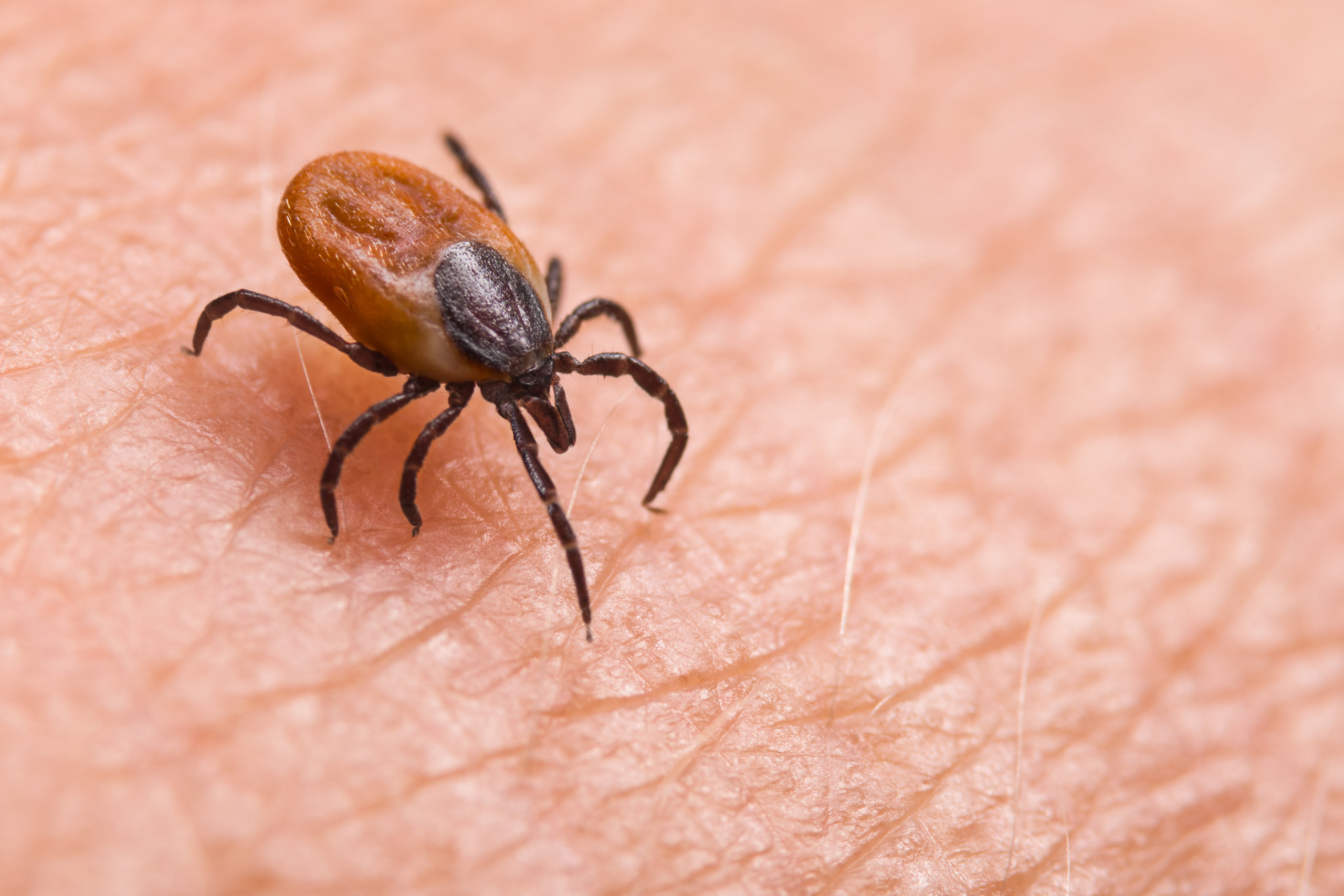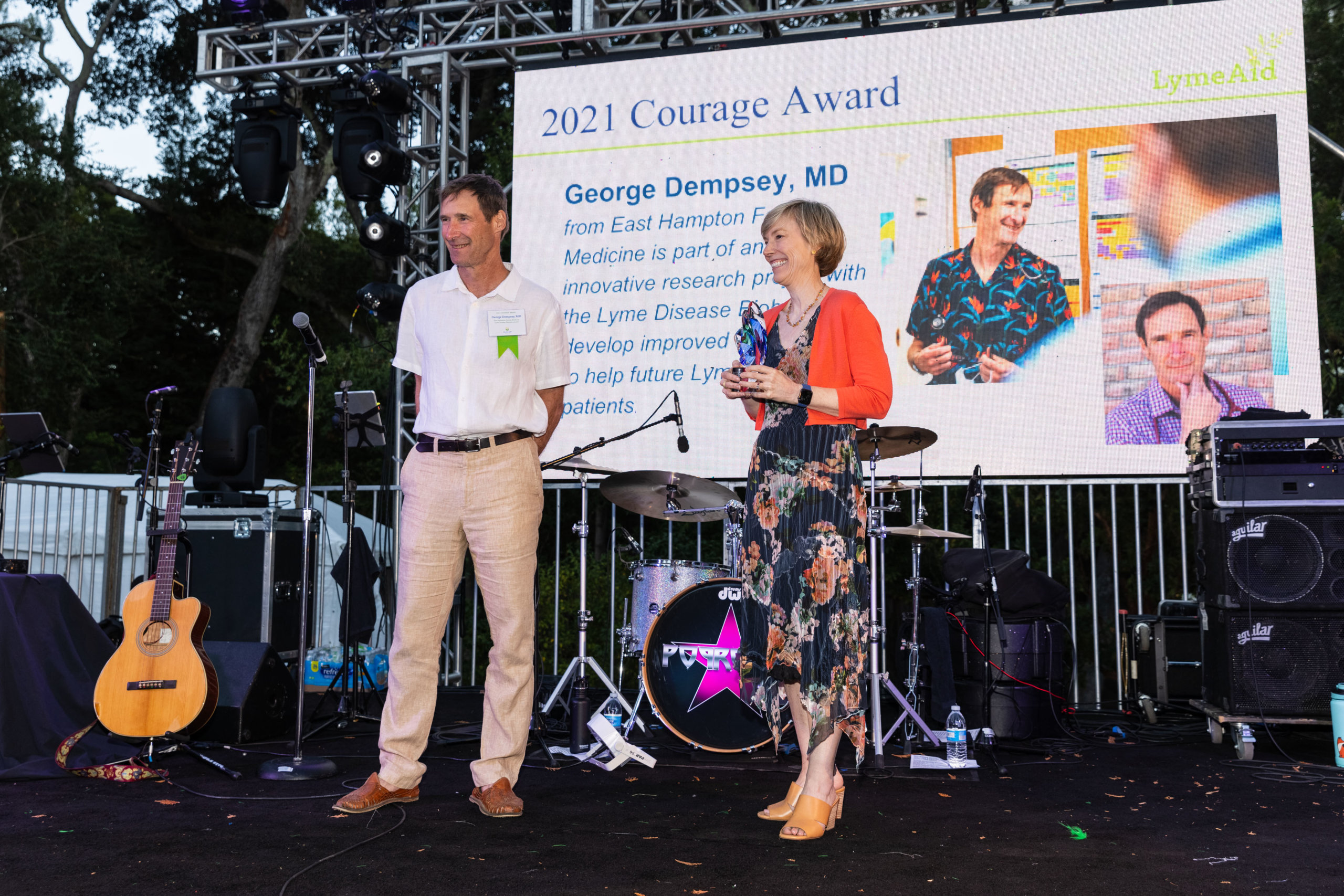Lyme Disease Detection Makes Progress Nationwide Thanks to Local Samples

Most people who live on the East End of Long Island know someone who has had Lyme disease, or they have contracted the illness themselves.
It’s quite common among folks who spend any time working outdoors or enjoying nature in the Hamptons and North Fork. And while most get treated quickly and come through the other side unscathed, some say they have endured years of suffering and chronic problems with little help from the medical establishment because of an inability to diagnose.
With symptoms including painful and swollen joints, headaches, extreme fatigue, rashes, neck pain and stiffness, fever, irregular heartbeat, facial paralysis and more, Lyme disease can be quite difficult if left unidentified and untreated. Testing is not always simple and the offending bacterium that causes the disease, a pathogenic spirochete called Borrelia burgdorferi, can be hard to find in the blood.
But promising efforts are being made to learn more and improve testing, including some excellent work underway right here in East Hampton that has led to a groundbreaking diagnostic discovery.
Since 2014, Dr. George Dempsey has been contributing vital samples to the Bay Area Lyme Foundation’s Lyme Disease Biobank, which has proved invaluable to researchers studying new ways to test for Lyme disease.
His East Hampton Family Medical practice is one of eight collection sites, joined by Massachusetts General Hospital on the East Coast, to have enrolled more than 1,000 donors whose samples are supporting more than 70 research projects in academia and industry.
“It’s just like a blood bank, essentially, but it’s any tissue or blood or urine, or anything that can be stored, and then it’s used for research,” Dr. Dempsey says, explaining the biobank, which can keep samples for many years and stretch out their usefulness many times over during that time. “One blood donation could lead to 50 or 70 different research studies, because they just need a very small amount to do their assays,” he adds.
This particular biobank, which has numerous samples donated by volunteers who come to Dr. Dempsey’s office, is for tick-borne disease research only, and a board of experts reviews all requests to decide if scientists and researchers will be permitted to use samples they’re asking to study and test.
“It’s not like a free-for-all where everyone just grabs a sample — it’s curated, you could say,” Dr. Dempsey adds, describing a major goal of the biobank as “trying to get a better test that can be more definitive of the presence of the disease.”
The problem, Dr. Dempsey says, is that almost all Lyme testing is “indirect,” meaning doctors are not finding the bacteria in tests — instead they are looking for something that represents it, like antibodies that occur as a result of infection, for example.
“As you know from COVID, there’s a lot of antibody tests out there,” he says. “You also know from COVID that a PCR (test), which is molecular multiplication of the DNA, is more accurate,” Dr. Dempsey continues, explaining that polymerase chain reaction, or PCR, tests detect genetic material from a specific organism, such as the COVID-19 virus.

Understanding Lyme Disease
Unfortunately, Lyme typically has so few spirochetes active in the blood, that it’s almost impossible to detect with a PCR-style test. “It tends to disseminate in the first week — it tends to be out of the bloodstream or in such low numbers you can’t pick it up,” he says, acknowledging that it’s like searching for one piece of carrot in a cauldron of soup, rather than testing for something like the salt content, which would be nearly the same in every spoonful.
“The only time you have 100% certainty is when you actually identify the actual bacterium somewhere in the body. If you can isolate that bacteria and you see it, that means it’s there. But everything else is indirect,” Dr. Dempsey reiterates. “Still, the case with testing and antibodies, the vast majority of people developed a strong antibody response, and it shows,” he continues, making clear that indirect testing remains very effective. “It just doesn’t show early enough for a lot of people, so it takes weeks or a month to really develop the antibody response that the usual tests look for.”
It’s the reason people are often given a battery of antibiotics after receiving a tick bite or developing a rash around a bite, even if they no longer have the tick and are unsure if it was definitely a deer tick — the only species that carries Lyme in this region.
Dr. Dempsey has a library of rash images going back 20 years, and he says only 10% of people have the classic bullseye. “In a way, you have to give up the bullseye,” he adds, because there are “so many other symptomatic rashes.”
Many doctors treat what could potentially be Lyme rather than wait to find it with an accurate test after the body has had a chance to develop an immune response. This is also why it’s very important to bring in the tick, if at all possible, as it can rule out Lyme right away.
“Most of the ticks (on the East End) now are lone star, not deer ticks. We like to look at the ticks. It really helps because you can distinguish how long it’s been engorged and what type it is,” Dr. Dempsey says, pointing out that lone star ticks do not cause Lyme, but they can cause other problems, including the alpha-gal allergy to red meat.

Identifying Lyme Disease
Thanks to samples like those Dr. Dempsey sends to the Lyme Disease Biobank, a new diagnostic technique was recently discovered and entered into a national competition for ways to detect and treat bacterial infection. Researchers at Drexel University were awarded a LymeX Diagnostic Prize of $100,000 in November to help their new testing method advance toward FDA approval.
It could have more than 80% success detecting Lyme early while also discerning between past infections and reinfection.
As Dr. Dempsey describes it, the Drexel work doesn’t just show that antibodies are there, it looks at “what clothes they’re wearing.” There’s a difference if the antibody is “wearing relaxing pajamas” or “war suits,” and doctors can use this knowledge to better understand what phase the disease is in. “It gives you an idea of what the antibodies are rather than just say, it’s an antibody.”
Dr. Dempsey, who won a Courage Award from the Bay Area Lyme Foundation in 2021, says it would be extremely helpful to be able to determine whether or not Lyme has been treated. “We don’t know if it’s been treated or not. We just go by symptoms … Hopefully that will help. That to me will be the breakthrough, demonstrating that the infection has dissolved.”
He adds, “It’s very hard to define a disease if the symptoms are not specific. There’s no classical, perfect description of what a Lyme symptom is because it’s so similar to other things.”
That said, Dr. Dempsey notes that while it can cause serious problems for infected people, Lyme is usually manageable. “I really emphasize it’s easily treated when you catch it. I don’t want to encourage paranoia.”
The Centers for Disease Control says approximately 30,000 cases of Lyme disease are reported to them annually by state health departments and the District of Columbia, but that does not reflect every Lyme case diagnosed in the United States each year. Recent CDC estimates suggest that the number of people who get Lyme each year in this country is closer to 476,000. And the continually warmer weather year-round is only increasing the prevalence of ticks that carry the disease, so this problem is not likely to get better or go away any time soon.

Joining the Lyme Disease Biobank
Dr. Dempsey is inviting the community to be part of the solution by donating samples to the biobank and assisting future research. People experiencing symptoms of early-stage Lyme disease, who have not yet been treated or who are in the first 48 hours of taking antibiotics, are asked to donate a small sample of blood and fill out forms reporting symptoms.
These may include flu-like ailments, fever or chills, muscle and/or joint pain, headaches, fatigue and sometimes the skin rash that commonly (but not always) presents as a circular or expanding bullseye spreading out around the original bite area.
Donors will receive information on tick-borne diseases, advice from experienced doctors, tick-bite prevention tips and — maybe the best part — a $50 Amazon gift card as a thank-you for participating.
Contact Dr. Dempsey’s East Hampton Family Medicine in-person at 200 Pantigo Road in East Hampton or by calling 631-324-9200.



